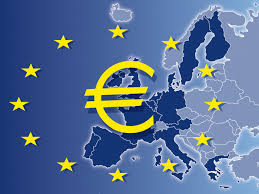What is the Euro zone?
The Euro zone or the Euro area is an economic and monetary union of a bloc of 19 countries within the European Union, which in itself is a confederation of 28 nations primarily from Europe, forming an economic union. The countries of the Euro zone use a common currency called the Euro and share a common independent monetary policy which is presided over by the European Central Bank. The zone’s current members include Austria, Belgium, Cyprus, Estonia, Finland, France, Germany, Greece, Ireland, Lithuania, Latvia, Italy, Luxembourg, Malta, the Netherlands, Portugal, Slovakia, Slovenia, and Spain. There is no common fiscal policy, which is the responsibility of the respective individual national governments, although the member nations have agreed on certain rules on public finances as a part of the Stability and Growth Pact. This pact imposes limits on public debt and deficit.
A brief background of the Euro zone and the Euro:
The Euro was launched on 1st January 1999, although adoption of a common European currency was first proposed way back in 1929. In 1979, the European Monetary System was created, fixing exchange rates onto the European currency Unit. It was an accounting currency which was a basket of currencies of the European Economic Community, the predecessor of the European Union. With the signing of the Maastricht treaty in 1992, which created the European Union from the European Economic Community, it was decided that a single common currency would be adopted by 1999. The exchange rate of the Euro with respect to other individual currencies was decided on the basis of market exchange rates as on 31st December 1998 , in such a way so that 1 Euro would equal 1 European currency unit. The Euro was introduced, replacing the old national currencies in two phases-
1. In a virtual non physical form from 1999 onwards for accounting purposes and in cash less banking transactions like traveler’s cheques, electronic transfers, etc. Also all government bonds and debt started to be denominated in Euros. The national currencies of the participating euro zone countries ceased to exist independently as they were locked at fixed exchange rates against each other.
2.In physical form on 1st January 2002 although the local currencies continued to be accepted as legal tender for around 2 months in most member states.
Greece joined the Euro zone in 2001 and other European Union countries are eligible to join it once they meet the convergence criteria. The UK and Denmark were given an opt –out clause in the Maastricht treaty itself, which exempts them from participation even today. There are countries outside the European Union also who use the Euro as their official currency, but they have no formal representation in the European central bank as other Euro zone nations do.
Click here for government certification in Accounting, Banking & Finance




